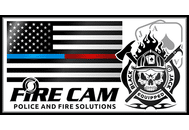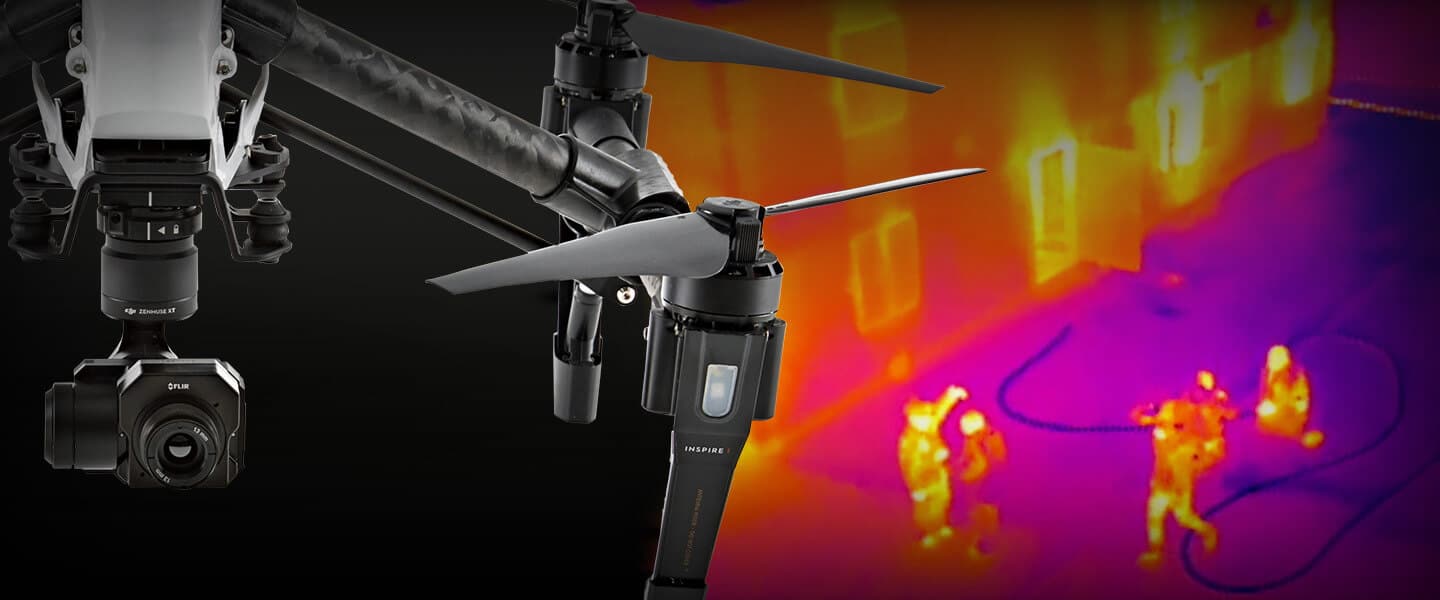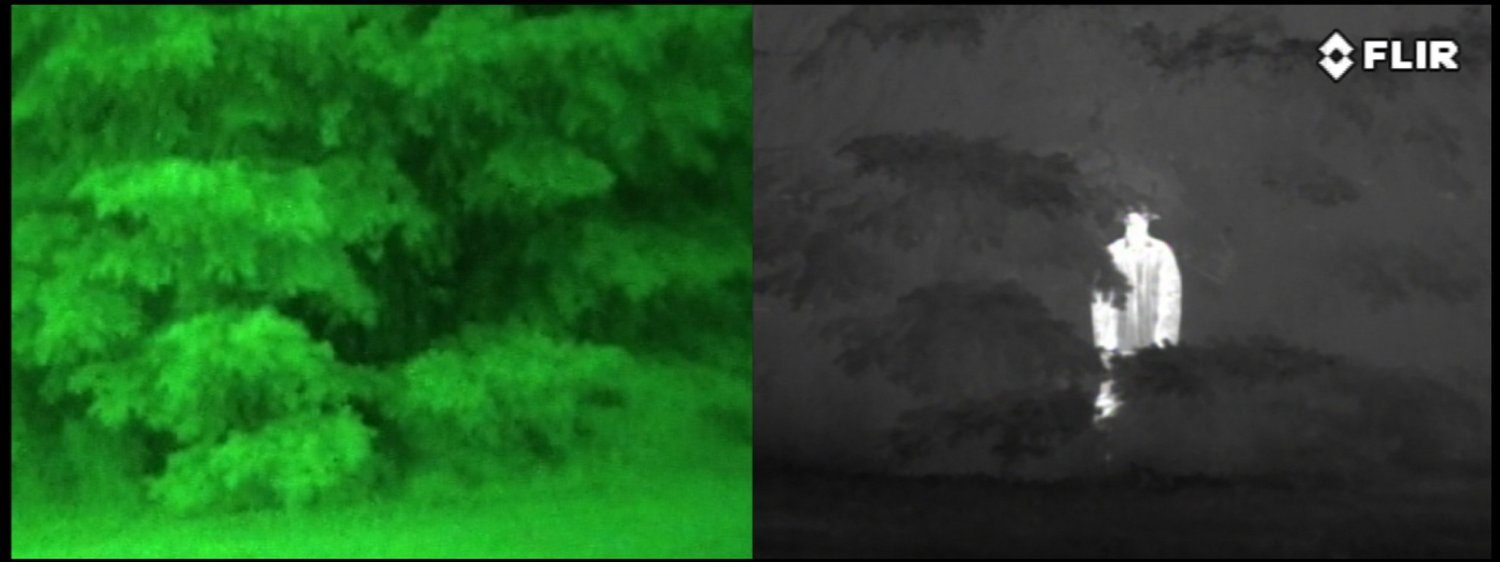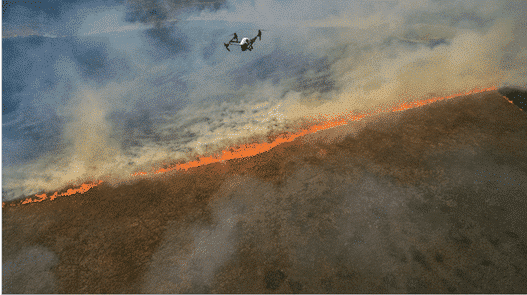The Story of Robert Schield – Fire Cam Inventor, Founder, & Dreamer
On September 7th, 2020, retired East St. Louis firefighter Robert Schield was tragically killed in an accident in Illinois. While his passing left a bottomless void in the lives of his family and friends, his loss is also felt by the entire fire service; even if they never knew his name.
Rob was better known as the founder and CEO of the firefighter helmet camera manufacturer, Fire Cam, and as the inventor that created their flagship products.
The lesser-known part of his story is, undoubtedly, the bigger picture. That story is the culmination of the husband, father, brother, son, inventor, prankster, dreamer, and deeply respected firefighter with a larger-than-life personality. A man who filled every room he was in with joy and laughter, and a man who inspired confidence on the fireground in the face of extreme adversity.

Robert Schield was a man deeply driven to serve others, in causes far greater than himself, which led to the creation of the most innovative training, investigation, and critique tool the worldwide fire service has ever seen.
I met Rob two months before his untimely passing, when he engaged my writing services on behalf of Fire Cam. We immediately bonded over our military service and the love of firefighting, him with roughly 30 years of service to my own 17. Despite distance, age, and separation, it was instantly clear to me that as far as Rob was concerned, we were brothers.
There was no mistaking his confident and trusting nature, or his magnetic personality that could pull a smile from even the darkest moments. The hours I spent interviewing him about his story were filled with laughter and banter, and I intuitively felt like I knew Rob my whole life. Despite only knowing him for a few months, the news of his passing left me feeling empty. It was as if an important part of this world had fled; a part I was previously unaware of but had appreciated nonetheless.
So when his wife Jami asked me if I could tell his story, using his own words that I had been carefully collecting for the previous task, I accepted without hesitation.
Yet, even with dozens of hours’ worth of interview time with Rob, his family and friends, I puzzled over the question. How do you truly measure the value of a man who so thoroughly placed others before himself? How do you capture the captivating story of a man who left this world far before his time, but not before changing it for so many people, and leaving an indelible mark on the entire fire service, worldwide?
For Rob, I can try.
The Beginning of a Dream
Like so many firefighters, Rob grew up dreaming of the day when he, too, could chase the flames. His parents, Ron and Judy Schield, wryly remember childhood-Rob making a cardboard box ‘fire’ and running for a garden hose taped to a firetruck. Any firefighter could imagine what was circling through his mind as he stretched on that “job”.
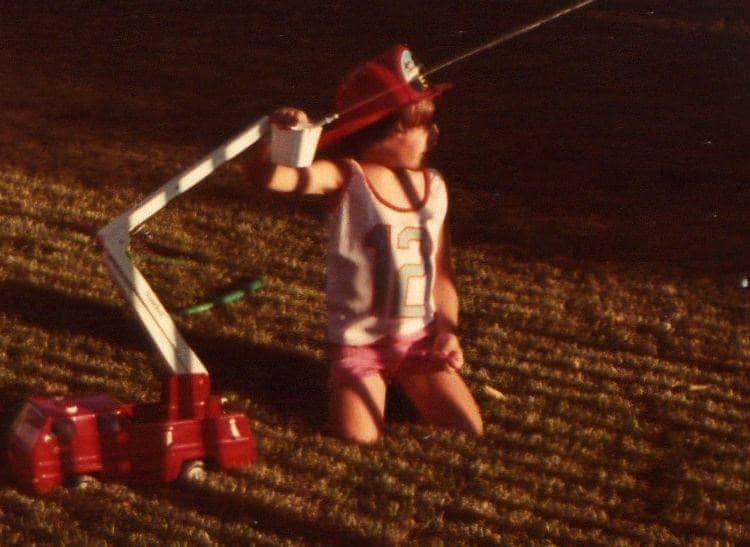
Aside from all things firefighter, Rob also had a unique fascination for life through the lens of a camera. Even as a child, he understood the power that visual perspective could give to a story. He also understood the idea that getting cameras into unconventional places makes for good video – like taping his father’s new camcorder to the top of an RC car. Above all, Rob was a pursuer of the undeniable connection created between the camera lens and the viewer of that footage.
When Rob was 19, his older brother Randy got on the job as a paid firefighter in their home city of Belleville, IL. Not one to miss out, Rob took to the streets of Belleville, camera in hand, chasing Belleville’s bravest to every job. He quickly developed a reputation for excellent photography skills, and a willingness to share anything he captured with anyone.
To this day, the walls of Belleville and East St. Louis’s station houses are adorned with action shots taken by Rob, which showed up one day in a nondescript box, printed out and ready to hang. One of his pictures even found its way to the coveted spot on the front cover of Firehouse Magazine for the July 2001 edition.

With this backdrop of passion, skill, and determination to help others, it should be no surprise that Rob would eventually push the boundaries of existing camera technology to places previously unreachable, to tell stories that otherwise may have gone untold.
“Off-Limits” just means no one has pushed it far enough
Before Rob, the interior of a working fire was completely off-limits to anyone who wasn’t in firefighting gear, and actively fighting that fire. Despite the technology advancements that put cameras underwater, on speeding vehicles, and on the edge of flying snowboards, the inside of a structure fire remained unrecorded.
For firefighters, sharing their experience meant breaking out the age-old “war stories,” and trying to explain what they saw, felt, and did. And while war stories are a staple of the fire service, their ability to “transfer knowledge” is limited by stress-affected memory and the ability of the story-teller.
Just like strapping that camera to his RC car, Rob believed that if firefighters could see video of fire behavior, and firefighters in action, their perspective could be that much better. Their understanding could be that much deeper. And by extension, they may be that much safer.
Addressing the problem
There was only one problem: a camera that could survive fire conditions just didn’t exist. Well, Rob was never one to back down from a challenge and instead of letting his idea die, he started figuring out how to solve it. In 2007, then 7-years deep into his firefighting career at East St. Louis, Rob took the first steps towards his solution.
As a test, he researched and bought the leading action camera of the time. Since there was no mount for a firefighter helmet, he compromised by unceremoniously duct-taping it to his helmet. Naturally, before the tape had even set, his engine was blown out for a fully-involved residential fire, and even with his less-than-ideal mounting job, Rob was able to record enough of the action before the camera succumbed to the conditions.
Since this was pre-YouTube, Rob took the footage and uploaded it to Break.com, and in a single weekend the video had 127,000 views. He had gone viral before viral was a thing. And he also realized that he was onto something that people wanted to see.
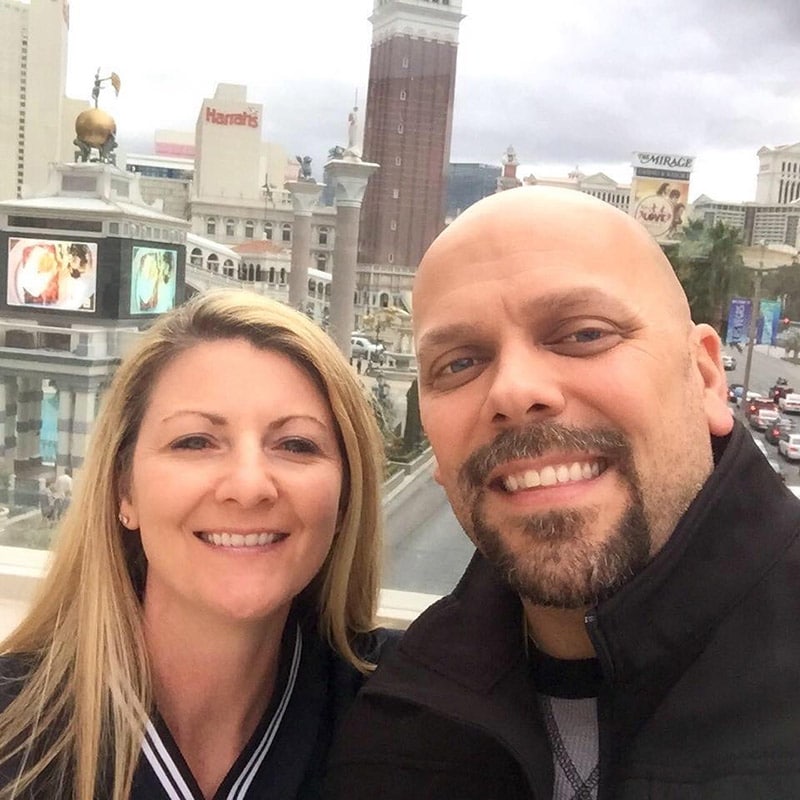
It didn’t take long before Rob approached his wife, Jami, and sweetly asked her if he could max out her credit card buying 10 more cameras. Jami recalls asking him if he was crazy, since they had an infant and this wasn’t nearly the first time Rob came up with an off-the-wall idea. But something about Rob’s tone, and the passion he showed for the idea, made her pause. So, although they were living paycheck-to-paycheck, she agreed to join him.
With that, Fire Cam, as an idea and as a business, was born. Founded by two people with no formal business education, no venture capital backing, and only a dream to drive them.
For Rob, belief drove everything
Even from the very beginning, Rob firmly decided to sell the helmet cameras as a package of mount, camera and accessories under a single price. As he saw it, firefighters should be able to get everything they needed in one shot from a single source, instead of having to make multiple purchases to make something work.
As luck would have it, Chris McCorkle, inventor and owner of the BlackJack Helmet Flashlight Holder, offered to manufacture a helmet mount specifically for these new cameras. An offer Rob accepted enthusiastically since BlackJack already had a well-deserved reputation for exceptional products.
With a camera and mount now ready to go, Rob, Jami, and another part-time Fire Cam employee attended their first FDIC Indianapolis, in 2008, to show off their idea. Not knowing what to expect, they opted for a cheaper hallway booth, instead of the more expensive floor booths typically occupied by the bigger manufacturers.
Despite their somewhat hidden location, the event was a resounding success. Not only did Fire Cam attract massive attention, with the booth being surrounded by firefighters sometimes 10 and 15 deep, but they also sold every single item they brought with them. This was the sign Rob and Jami needed. Firefighters wanted a camera that could survive fire conditions, so Rob was going to make it for them.

With FDIC behind them, Rob set out to attack the actual problems with the cameras they were selling: they just weren’t durable enough, and they were letting firefighters down at critical moments. For Rob, that was unacceptable, and he refused to offer a product to firefighters if it would let them down at the first hard job.
Custom-designing the solution
To solve the somewhat-crazy problem of making an electronic camera that could survive live fire conditions, Rob searched around until he found an engineer willing to take on the task. Using money they had saved up, Rob and Jami hired the engineer and an electronics manufacturer, to produce the first prototypes.
From the very first prototype that arrived at their house, Rob was dead-set on designing a camera that could survive a life on a firefighter’s helmet. And not just survive under optimal conditions, but continue working under the tough conditions of a less-than-optimal interior attack or rescue.
Day after day, shift after shift, Rob would take prototypes to work at East St. Louis and put them to work on his helmet. At the time, his engine company was taking in 3-5 working fires a shift on average, holding the line against the staggering fire load of urban blight that was rapidly swallowing up the city. So there was no shortage of demanding fire conditions to test each design, destroy it, and send it back to the engineer with a stack of notes.
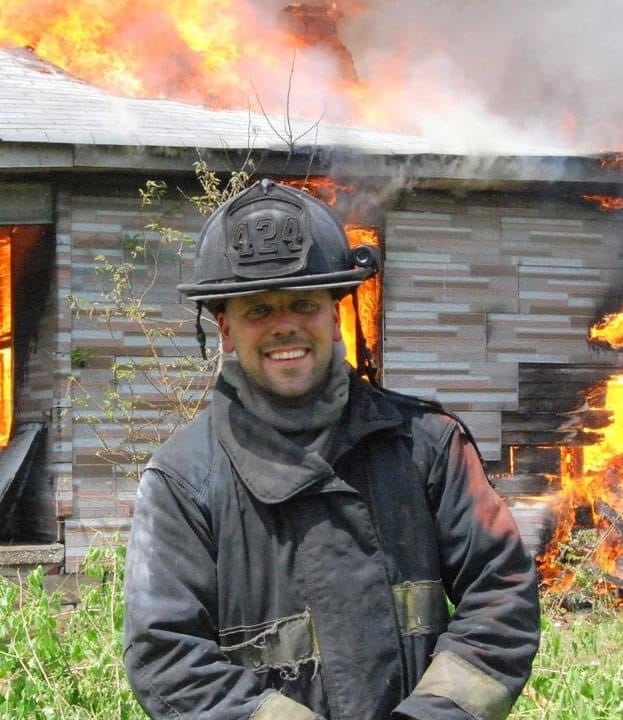
Throughout the process, Rob refused to settle on a design that almost met his standard, or was otherwise more economically feasible to manufacture and distribute. He demanded the engineers solve every problem they discovered in testing, including custom-designing a heat-resistant glass lens that prevented radiant heat from melting the camera and also sourcing a thermally resistant plastic to mount the camera electronics board on.
He also demanded that the camera be 100% repairable, with all replaceable components. Unlike other camera manufacturers that offered a product that had to be re-purchased in the event of failure or damage, Rob insisted that their camera always be repairable for much less than the cost of a new camera. As he saw it, firefighters likely didn’t have the disposable income to be re-buying cameras, and he was going to make sure they wouldn’t have to.
The final testing phase took place at a nondescript burn building on the campus of a nearby fire academy. Rob, and a fellow firefighter, Cris Burch, put their own bodies at risk to torture-test the design. Wearing their own turnout gear, and decked out with the latest camera design, both men took turns pushing the envelope.
At the end of the day, it took wearing four Nomex hoods at once, and fire conditions that destroyed their helmets, coats, and helmet shields, to wreck the camera. Rob was finally satisfied and the Fire Cam 1080 hit the market in 2011.
As Jami put it, Rob suddenly became a “fire service celebrity.”
From that point on, at every event, show, or even casual conversation, Rob would be surrounded by firefighters from all corners of the world. For the most part they just couldn’t believe that there was a camera specifically designed to be mounted on a fire helmet, and survive. It never failed though, after speaking with Rob, they usually always bought one.
True to his altruistic nature, Rob was always 100% customer-focused, and could always be guaranteed to choose taking care of the customer over the more business-prudent option. His business mentor and friend, Paul Conway, founder of the wildly successful fire service company, Conway Shield, laughingly remembers Rob as a man deeply committed to taking care of his customers. And if his business also happened to make a profit, well that was just a bonus.
It was not at all unusual for Fire Cam to bring a certain number of cameras to sell at FDIC, and walk away with receipts for only two-thirds of them. Naturally, Jami, also Fire Cam’s chief financial officer, would start asking questions only to be told “go ask Rob.” Eventually Jami even instituted a tongue-in-cheek rule that Rob couldn’t speak to customers without a chaperone present.
Much to Jami’s chagrin, customers would just call Rob at the office later and get the same result. Despite the obvious business implications, Rob’s unwavering commitment to take care of customer’s first, and caring about profit a far-distant second, built an incredibly loyal following amongst Fire Cam customers.
Expanding the line-up
Not content to “just” make the best firefighter helmet camera on the market, Rob and Jami, now the heads of a multi-employee, multi-million dollar company, also turned their attention to other ways they could help first responders with a camera product.
Using his expertise and connections in designing task-specific cameras, Rob started development on police officer body cameras that met the needs of officers in the field. Just like the firefighters he worked with, Rob had a special place in his heart for police officers and considered them family just the same.

In 2016, at the urging of a friend, Rob explored the rapidly growing world of public safety drone use. After meeting with experts, and realizing the huge potential that drones could play for public safety agencies, Fire Cam began a distribution partnership with the world’s largest drone manufacturer, DJI.
To better support their customers, Rob and Jami also created an entire public safety sales pipeline that included drone packages, expert training, grant-assistance, and continued assistance, all so agencies could learn about drones from public safety experts, and incorporate them into their programs easier.
Saying Goodbye
Incredibly enough, even though Fire Cam was growing at a significant rate, Rob continued his employment as a firefighter for the city of East St. Louis right up to his retirement day at exactly 20 years of service. Throughout his career, Rob never wavered from his beliefs, like living for others, family, loyalty, authenticity, and faith. Content to “ride the back step” his entire career, Rob proudly wore the well-earned reputation for being an aggressive firefighter that would sooner let the fire take him before it took any of his guys.
Though Rob loved fighting fire as much as most firefighters do, the city was facing yet another round of potential layoffs. So, in order to preserve a job and ultimately spend more time with his family, Rob retired from being a firefighter on Sept. 9, 2019.
Exactly one year later, those same firefighters would gather with Rob’s family and friends to wrestle with the impossible task of saying goodbye.

On September 14th, 2020, Robert Schield was laid to rest at the Jefferson Barracks National Cemetery, in St. Louis, MO. In the days prior, hundreds of firefighters from across the nation would come in person to pay their respects, and many thousands more from across the world would call or message in with their thoughts and prayers.
That morning would dawn bright and clear, with a few puffy clouds lazily drifting across the sky. Inside the church that the Schield’s called their spiritual home, a socially-distanced crowd of mourners would spread out across the entire interior space while a long line of uniformed firefighters approached Rob’s casket one at a time to render honors.
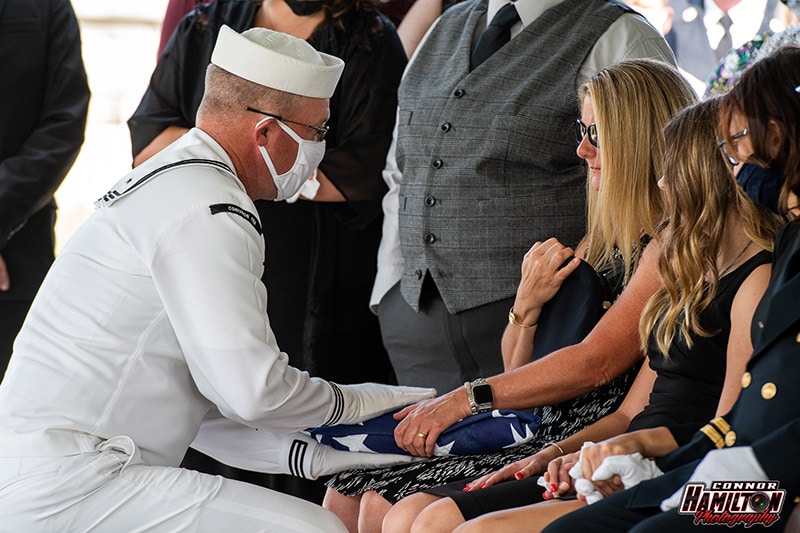
That line, full of the somber faces worn by hard men and women who share an indescribable bond and inescapable loss, would snake back through the church to the lobby, where it would wind past a small table covered by a white cloth. An island in the otherwise stark space of the brick and tile lobby.
Simply-adorned, the table stood as a tangible piece of the man no longer there. A few well-chosen photographs, a small desk statue Rob got from his daughters that spells out “Hero”, and a blackened firefighter’s helmet that can tell more tales than most books.
Scarred by repeated exposure to intense heat, the helmet bears silent witness to the dedication of the man who wore it. The corners of the blackened leather shield are turned up and charred, the numbers “424”, an engine house closed now, almost fade into the background from fire damage, and the reflective tetrahedrons are all but gone.
Mounted to the side of the helmet, exactly as he left it on his last day as an active firefighter and bearing its own scars, is a Fire Cam.
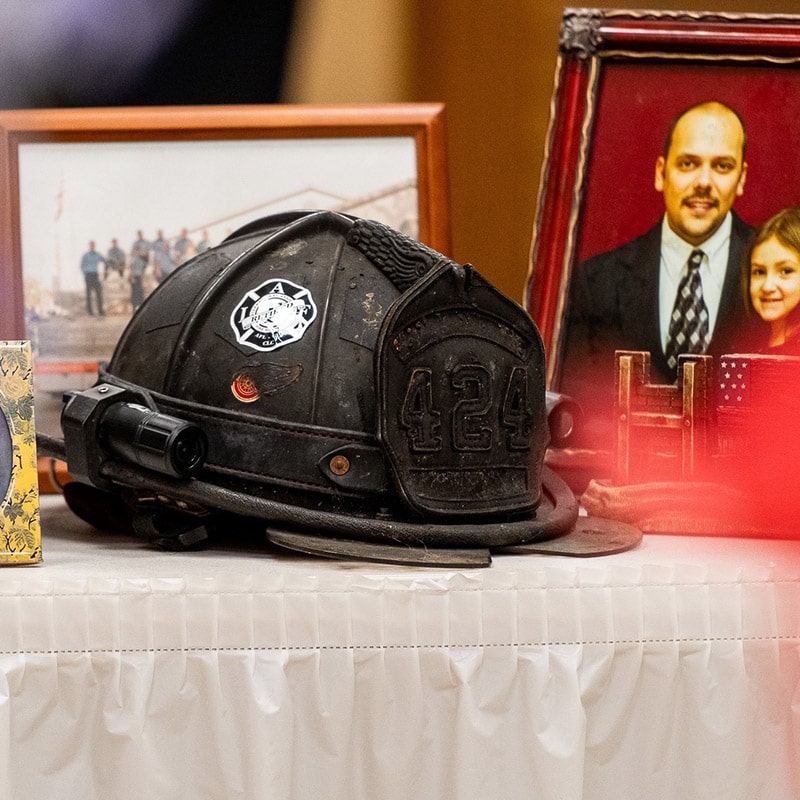
In the days following Rob’s funeral, as support and grief continue to pour in, friends and loved ones try to make sense of the tragedy. They try to attach some sort of meaning or reason to something, anything, that can help them cope with the monumental loss of the man.
Among those growing sentiments is one that immediately took hold, and gave comfort. One that captured the essence of Rob’s personality, his gregarious nature, and his willingness to live life every day as if it were your last.
What would Rob do? #WWRD
Well, what had Rob done?
Rob’s Legacy
Much like the moment when instant-replay revolutionized professional sports, the creation of Fire Cam revolutionized the way firefighters throughout the world could remember and critique their performance. In a way that had never existed before.
Instead of relying on memories flawed by stress and distractions, Fire Cam-equipped firefighters could critically examine every frame of their performance, seeing things they may have reacted to but not remembered. While that may be threatening to some, there is no getting around the old adage that “the camera doesn’t lie,” and improvement can only be made by realizing where the shortfalls are.
More importantly, Fire Cams are a priceless boost to fire investigations. Trained investigators could now see for themselves what fire conditions were like, at the critical moments before firefighters began extinguishing their evidence. Just like being there in real time, an investigator could pick up on clues a non-investigator would miss, purely because the non-investigator is not trained on what to look for.
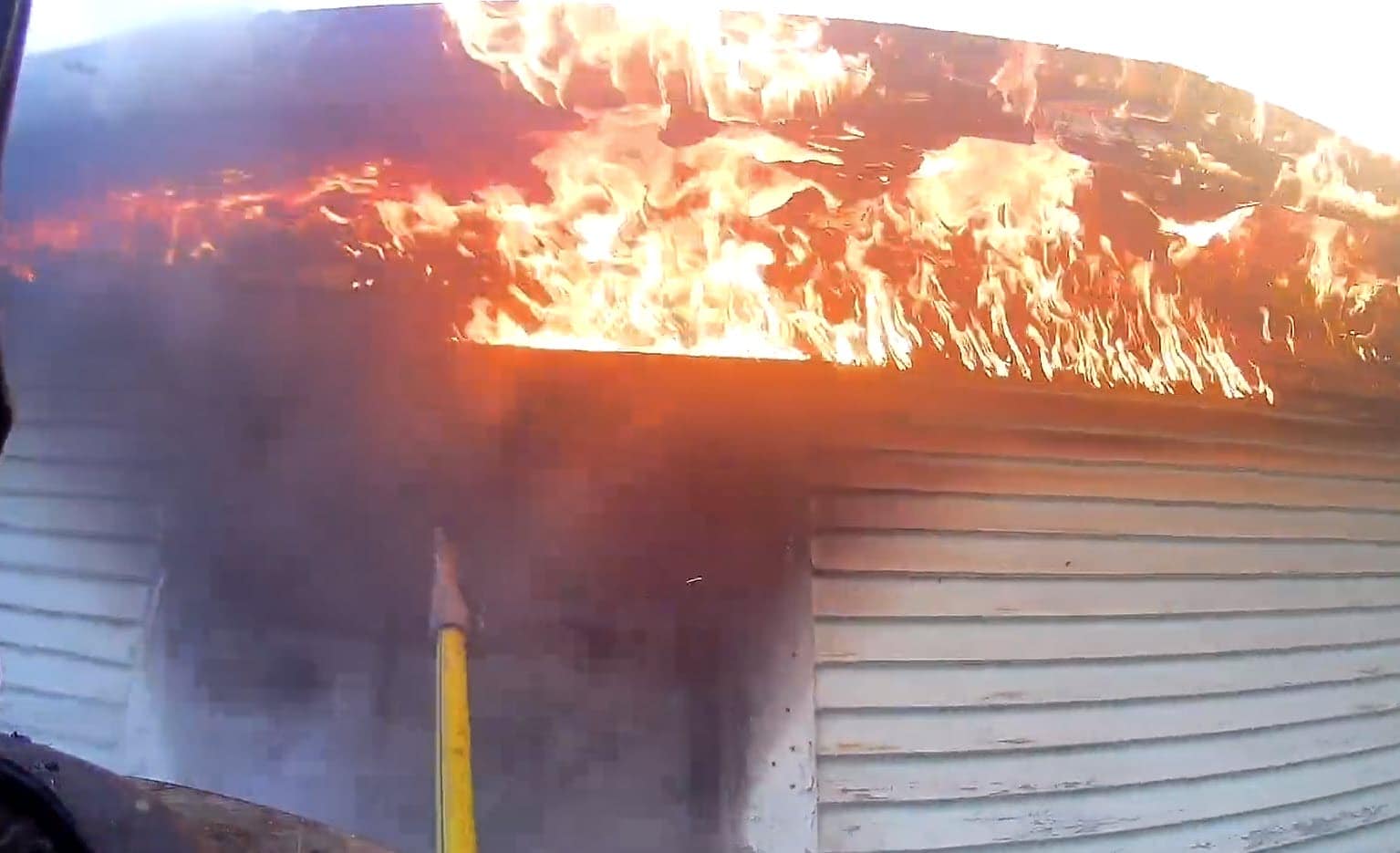
Those changes, however, pale in comparison to the reality that Fire Cams have completely changed how future generations of firefighters can be taught the craft. Instead of long-winded lectures full of words and a few images, fire instructors can now use real-life fire attack footage to illustrate fire behavior points, or drive home the importance of checking for victims in unlikely places.
Videos of different attack options, ventilation choices, even stream placement, can all be shown as they happened. Recruits, and even seasoned firefighters, can see for themselves how interior conditions can change under different circumstances.
The unfortunate truth of today’s fire training cycle is that there just isn’t enough time in the training calendar to show entry-level firefighters everything they need to know of what a fire is really like. There just aren’t enough burn towers or acquired structures available to help firefighters build the mental index of how to manage all the situations that can potentially injure or kill them.
And while footage is no substitute for real-life experience, there is undeniable value in being able to watch fire conditions with a first-person perspective of real fires. With every fire being unique, years of viewable experience can be packed into just a few hours of well-selected footage, giving firefighters a mental starting point instead of throwing them in blind.
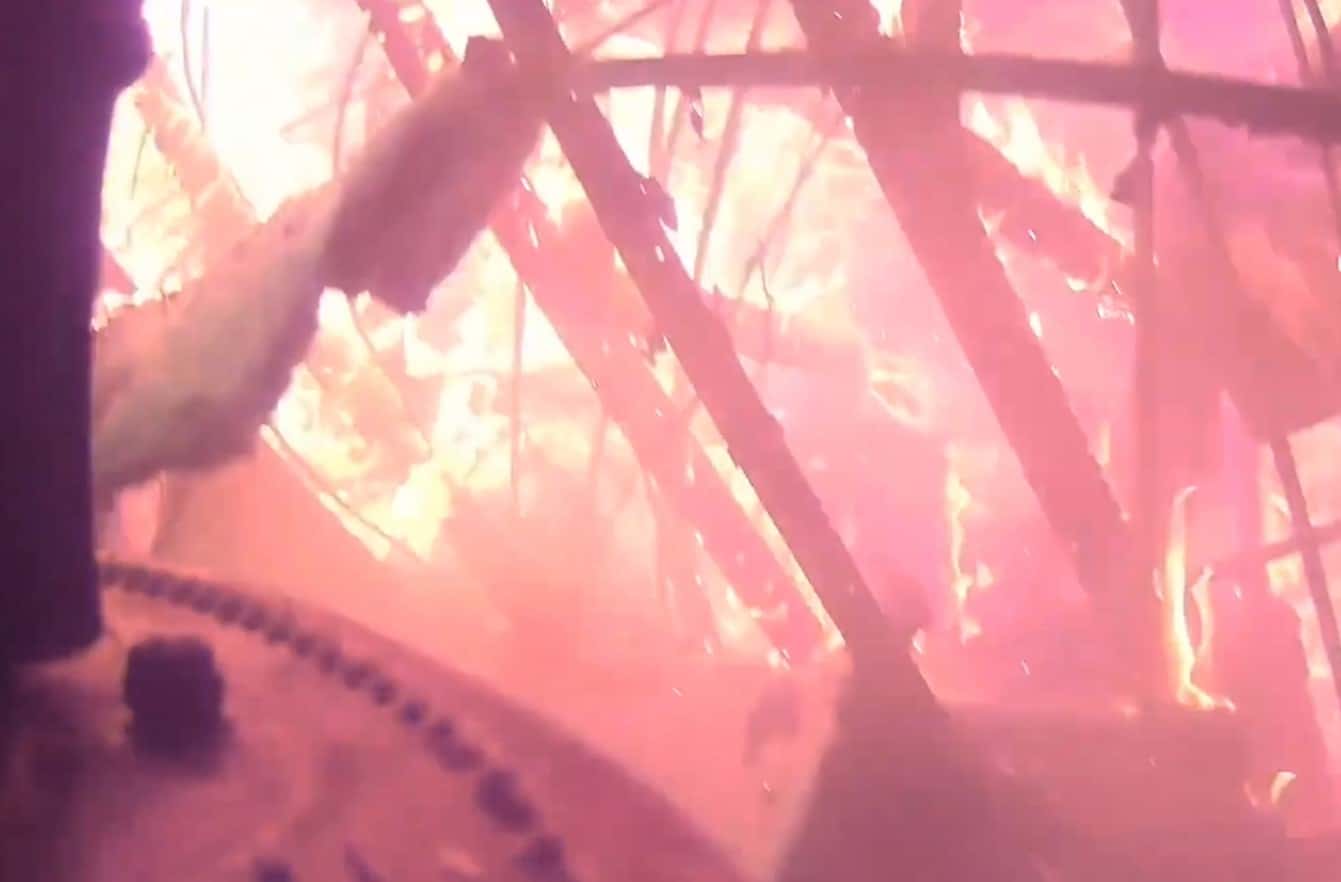
What that also means is that any firefighter at any fire can record footage worthy of passing on knowledge. So, firefighters of all experience levels, from extremely busy departments to the one-fire-a-decade departments, can all contribute to the overall knowledge pool of the fire service as a whole. With each video, we can get just a bit better. A bit more informed.
As firefighters, sometimes it seems all we have to offer the world is what we have each seen and done, in the hopes that others can learn from our experiences and be just a bit better than we were. Only, most firefighters will never find themselves on tour, sharing their experience with other smoke eaters. Most firefighters will not spend their days teaching the craft and filling the minds of wide-eyed recruits. Most firefighters will never use their war stories for anything more than table-top boasting and entertainment.
And the tragedy is, when we all eventually pass from this world, all that priceless knowledge passes with us. Untold, and useless to those who remain holding the line. Those who’s very safety could have been impacted by what we knew and never shared.
That is Rob’s legacy, his gift, and also his intention from the start.
There is no doubt that Rob deeply believed in being always true to yourself, but more importantly, always being true to others. Without hesitation, he would give anyone his last dollar or his last breath, because he knew in his soul that helping others was life’s greatest calling.
Rob Schield left this earth far before his time, but not before pouring his entire heart into making sure that every firefighter, regardless of nationality, department, or level of experience, could take care of their brothers and sisters by sharing their knowledge and passing on their experience. Through his own determination and steadfast belief in others, Rob gifted the fire service with the chance to take care of our own in a new and profound way that will continue on into the future, unabated.
As days come and go, and new firefighters become old firefighters, it’s inevitable that interior fire attack footage will find greater and greater uses. Firefighters will continue to learn and improve, fire investigators will push towards deeper investigations, and the entire body of fire science will expand with each passing moment of footage.
Every day, every fire, every moment of reality captured and shared, is one more step towards safer and more knowledgeable firefighters, who can then go on and pass their own truth into the future. Forgetting borders, boundaries, or ideological differences, we can all take care of each other.
And that’s what Rob would do.
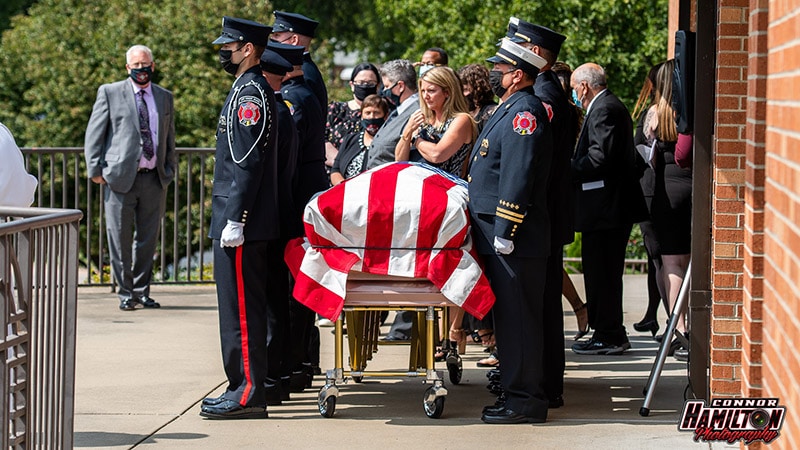
Author Notes:
All funeral images are courtesy of photographer Connor Hamilton, who owns and operates
Connor Hamilton Photography (@connorhamiltonphoto).
Author: James Warnet is a direct response sales copywriter, digital marketer, and owner/one-man-band of NudgeCopy, a digital marketing solutions company focused on helping First Responder businesses navigate the complexities of online marketing. James is also an 18-year veteran of the volunteer fire service and a third-generation firefighter, now serving with Mahwah Fire Rescue Co #1, in Mahwah, NJ.
